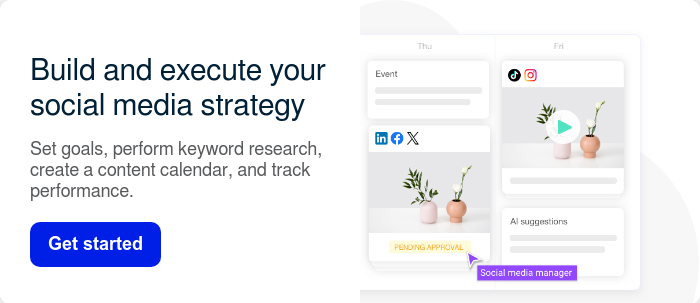If you want to grow on Instagram in 2025, you can’t rely on guesswork or simply copying trends. You need to understand your competitive landscape — what your rivals are posting, how fast they’re growing, and where there are gaps you can capitalize on.
That’s why Instagram’s new Competitive Insights feature is one of the most important updates for creators, marketers, and businesses this year. For the first time, you can track competitor activity directly inside Instagram without needing a third-party analytics tool.
In this article, you’ll learn:
- What Instagram Competitive Insights actually shows you
- How to set it up (step-by-step)
- Which metrics truly matter — and which you should ignore
- A repeatable framework for competitor analysis
- How to fill in the gaps where Instagram’s data falls short
Let’s dive in.

What Is Instagram Competitive Insights?
Instagram Competitive Insights is a new tool inside the Professional Dashboard that allows Business and Creator accounts to compare their performance with up to 10 competitor accounts.
You can compare metrics such as:
- Follower growth
- Posting frequency
- Number of feed posts, Reels, and ads
- Performance of individual posts published by competitors
- Boosted vs. organic content
- Timeframe comparisons (30, 60, or 90 days)

This is a major upgrade for creators and marketers who previously relied on manual checks or partial third-party metrics.
Limitations You Should Know About
While powerful, the feature is not perfect. Instagram does not currently show:
- Engagement rate
- Saves or shares
- Story performance
- Reach or impressions
- Historical data beyond 90 days
- Conversion-related metrics (clicks, sales, signups)
This means Instagram gives you what happened — but not why it happened.
You'll need a strategic method (and sometimes complementary tools) to get the full picture. We’ll cover that shortly.
Why Tracking Instagram Competitor Insights Matters
Competitor analysis is more than checking what others do — it’s about making data-driven decisions that improve your content strategy.
Here’s why it matters:
1. You see the real growth standards in your niche
Is your account growing slowly, or is your niche slow by nature? Competitor data gives you a baseline.
2. You learn your competitors’ posting and content strategies
You can see how many Reels, feed posts, or boosts they use to drive results.
3. You uncover content opportunities
If your top competitors post lots of carousels but almost no behind-the-scenes Reels… that might be your chance to stand out.
4. You identify when competitors invest in paid promotion
Boosted posts tell you which campaigns they’re pushing hardest.
5. You make smarter, less risky decisions
Instead of experimenting blindly, you can use proven patterns.
How to Set Up Instagram Competitive Insights (Step-by-Step)
You only need a Business or Creator account to access this feature. Here’s the setup in under two minutes:
- Step 1 — Switch to a professional account. Do this by navigating to: Settings → Account → Switch to Professional Account.
- Step 2 — Open the Professional Dashboard at the top of your profile.
- Step 3 — Tap “Competitive Insights”. This will open the competitor dashboard.
- Step 4 — Add up to 10 competitor accounts. Instagram recommends relevant suggested competitors, but you can add your own.
- Step 5 — Select your timeframe. Choose 30, 60, or 90 days.
That’s it — you’ll now see side-by-side comparisons of your competitors’ activity and growth.
A strong set of competitors = stronger insights.
A Proven Framework for Analyzing Instagram Competitor Insights
This is where your blog post becomes better than the rest: you need a repeatable method.
Use this 5-part framework monthly:
1. Benchmark Follower Growth
Ask:
- Who is growing fastest?
- Who is stagnating?
- Are there sudden spikes?
Growth patterns often signal:
- Viral content
- Paid promotions
- Big announcements or product launches
- Seasonal campaigns
2. Compare Posting Frequency
Look at the number of:
- Posts per week
- Reels
- Feed posts
- Boosted posts
- and how posting frequency relates to growth
If a competitor grows steadily while posting only twice a week, it tells you they're posting high-quality, optimized content — not just posting more.
3. Study Their Best-Performing Content
Instagram lets you see individual competitor posts. That’s huge.
Review:
- The topics that were covered
- Which formats were used
- What hooks were used (first line/headline)
- The CTAs that were added
- Production style (polished? raw? talking-head?)
The goal is not to copy.
The goal is to learn what your shared audience responds to.
4. Spot Paid Content (Boosted Posts)
When a competitor boosts a post, you can assume it...
- is a top performer
- has strong engagement
- aligns with a paid campaign
- is important to their brand messaging
Track how often they boost content — and what type they boost.
This gives you clues about:
- Their marketing priorities
- What they’re willing to pay for
- What content converts for them
5. Analyze Spikes, Drops, and Anomalies
When you see unusual activity, ask:
- Did they collaborate with a creator?
- Did they run a giveaway?
- Was there a viral Reel?
- Was a product launched?
- Did a story go viral and then feed posts followed?
Big spikes always have reasons. Find those reasons — and replicate the pattern, not the post.
How to Track What Instagram Competitor Insights Doesn’t Show You
The native tool is solid — but incomplete. Here’s how to fill in the data gaps that even the best rival blog posts overlook.
PS. Instagram Insights in StoryChief tells you what type of content is performing the best and what this tells you about your strategy. And the best thing: this data overview is free forever!

Related article: How to Measure the Success of Your Instagram Content
1. Engagement Rate (Most Important Missing Metric)
Use tools like:
- StoryChief
- Vaizle
- Metricool
- Socialinsider
- Brand24
Engagement rate tells you if competitors are growing with quality, not just quantity.
2. Saves and Shares
These two metrics are the strongest indicators of:
- Content usefulness
- Content impact
- Community depth
- Organic reach potential
Instagram does not expose this publicly, so use third-party tools or manual tracking.
3. Long-term Trends (Beyond 90 Days)
Make a simple spreadsheet.
Every 30 days, export:
- Follower growth
- Posts per month
- Reels per month
- Boosted content count
- Notable events
- Best posts per competitor
Trend lines reveal:
- Seasonality
- Strategy shifts
- Slow vs rapid growth phases
- When competitors change tactics
This is something almost no competitors do — and it gives you a massive advantage.
How to Turn Instagram Competitor Insights Into Content Decisions
Use this simple decision matrix each month:
If competitors are posting more often than you
- → Increase consistency, not stress.
→ Add 1–2 more Reels per week.
If competitors grow faster with fewer posts
- → Analyze the quality of their top-performing posts.
→ Improve storytelling, hooks, and value density.
If competitors boost specific formats
- → Test boosting similar formats with your content.
If competitors are weak in a content area
- → Dominate that category (e.g., BTS, tutorials, long-form captions).
This is how to “win” Instagram — not by copying, but by strategically differentiating.
Conclusion: Start Tracking Instagram Competitor Insights Today
Instagram’s new Competitive Insights tool is a game-changer — but only if you use it strategically.
Here’s your next step:
- Add 5–10 competitors
- Analyze posting patterns
- Identify content opportunities
- Supplement missing data with third-party tools
- Track trends monthly
- Use insights to refine your content strategy
If you follow this guide, you’ll outperform your competitors — because while they’re posting blindly, you’ll be making data-informed decisions every month.
Free tool: Analyze your target audience, brand voice, content pillars and competitors. Try it now.






